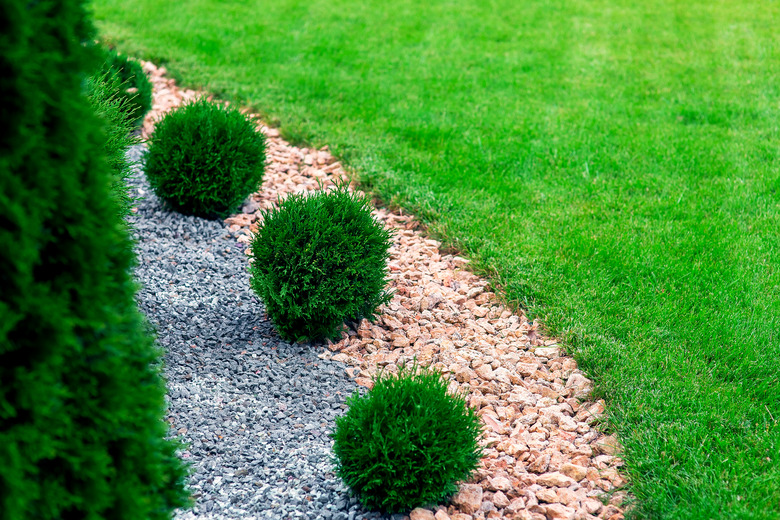What To Use As A Weed Barrier Under Stone
We may receive a commission on purchases made from links.
Weeds don't care who you are, where you live or what your economic status is. They can turn anyone's manicured garden into an overgrown nightmare in a hurry. Gardeners can combat them with multiple mulching options — from organic mulches like shredded bark to inorganic choices like stone. When using stone to mulch your beds you'll need to lay a weed barrier underneath, which serves several important functions other than preventing unwanted growth.
Function of Weed Barriers
Function of Weed Barriers
Although mulch serves many functions in the garden — from helping the soil retain moisture to assisting in the prevention of weeds — it won't prevent the growth that can eventually take root on top. Regardless of whether you're using organic mulches or inorganic options, weed seeds can, over time, blow into the garden, land in the mulch and grow into problematic weeds.
You can help prevent weed growth by installing weed barrier cloth before you lay down the mulch. Weed barrier cloth prevents unwanted growth from the soil, but it won't prevent weeds from taking root in the mulch itself. Before installing weed barrier cloth it's important to first remove unwanted growth from the area to be covered by the barrier cloth. You can do this by pulling out the growth by hand or spraying it with an herbicide. If using an herbicide, follow all directions on the product label and give the sprayed weeds about a week to die before installing the weed barrier cloth.
Plastic Sheeting vs. Weed Cloth
Plastic Sheeting vs. Weed Cloth
When using stone mulch, it's important to install a barrier between the soil and the stones. The barrier serves two important functions. Not only will it help reduce weed growth sprouting from the soil, but it also keeps the stones in place and prevents them from sinking into the soil. Without installing a barrier beneath the stones, you'll find you're constantly having to replenish the area with new stone, which can become labor-intensive and expensive.
Using a solid piece of plastic may seem like a great idea, since it effectively kills unwanted vegetation when spread over an area, but it's not good for use in a garden bed. Plastic doesn't allow moisture or air to penetrate through it, which leads to an unhealthy garden since plant roots don't receive the oxygen or water they require for healthy growth.
On the other hand, weed barrier cloth is manufactured to be permeable, allowing water and air to move through it to the root system. It also prevents the stones from sinking into the ground.
Installing Weed Barrier Under Stone
Installing Weed Barrier Under Stone
Although you can install weed barrier cloth in an already thriving bed, using it on a fresh, unplanted area is a better approach since you don't have to cut around plants. First, measure the area's length and width so you'll know how much weed cloth to purchase. Then cut the weed cloth to fit the garden bed, being sure to overlap any edges by several inches. If plants are already growing in the area, cut an "x" where the weed cloth will fit over the plant and lay it in place. Be sure to use weed barrier pins to hold the cloth in place against the soil and to keep it from shifting.
After you've installed the weed barrier cloth, you can spread the stones over the area. Use several inches of stone and spread it evenly. To keep the area weed-free, be sure to remove any unwanted growth sprouting on top of the stones as soon as you notice it and before it grows into an unruly mess.
